Corsair SF600 Platinum PSU Review: Setting The SFX Performance Bar Higher
Why you can trust Tom's Hardware
Teardown and Component Analysis
Before proceeding with this page we strongly encourage you to a look at our PSUs 101 article, which provides valuable information about PSUs and their operation, allowing you to better understand the components we're about to discuss.
| General Data | |
|---|---|
| Manufacturer (OEM) | Great Wall |
| Primary Side | |
| Transient Filter | 4x Y caps, 2x X caps, 3x CM chokes, 1x MOV |
| Inrush Protection | NTC thermistor & relay |
| Bridge Rectifier(s) | 1x GBU25KH (800V, 25A @ 125°C) |
| APFC MOSFET | 1x Infineon IPZ60R099C7 (650V, 14A @ 100°C, 0.099Ω) |
| APFC Boost Diode | 1x Infineon IDH06G65C6 (600V, 6A @ 145°C) |
| Hold-up Cap(s) | 1x Nippon Chemi-Con (420V, 470uF, 2000h @ 105°C, KMZ) |
| Main Switchers | 2x 60F2094 |
| Driver IC | Silicon Labs Si8230BD |
| APFC Controller | Champion CM6502 & CM03X Green PFC controller |
| Resonant Controller | Champion CM6901X |
| Topology | Primary side: Half-bridge & LLC resonant controller Secondary side: Synchronous rectification & DC-DC converters |
| Secondary Side | |
| +12V MOSFETs | 4x Alpha & Omega AON6590 (40V, 100A @ 100°C, 1.55mΩ) |
| 5V & 3.3V | DC-DC Converters: 4x Nexperia PSMN2R0-30YL (30V, 100A @ 25°C, 2mΩ) PWM Controller: Anpec APW7159C |
| Filtering Capacitors | Electrolytics: Nippon Chemi-Con (4-10,000h @ 105°C, KY), Rubycon (3-6000h@ 105°C, YXJ) Polymers: Nippon Chemi-Con |
| Supervisor IC | IN1S429I -SCG |
| Fan Control MCU | PIC16F1824 |
| Fan Model | Corsair NR092L (92mm, 12V, 0.22A, 3950 RPM, rifle bearing) |
| 5VSB Circuit | |
| Rectifier | 1x CSD18534 FET (60V, 69A @ 25°C, 7.8mΩ) |
| Standby PWM Controller | Infineon ICE5QR1680AG |
This PSU is an upgraded version of the SF600 Gold platform designed to be even more efficient. A half-bridge topology is used on the primary side, along with an LLC resonant converter. On the secondary side, a synchronous rectification scheme is used, where four FETs regulate the +12V rail. A pair of DC-DC converters generate the minor rails and a FET handles the 5VSB rail, facilitating increased efficiency levels.




The split layout design is nice because it allows for ample clearance between the components, resulting in less obstructed airflow. Even when power output is high, the fan's speed can remain low to maintain quiet operation. It's usually difficult to manage acoustics well in a small, high-capacity enclosure. But Great Wall managed to achieve this through a combination of clever design and proper component choice. Corsair's engineers undoubtedly provided their feedback as well.






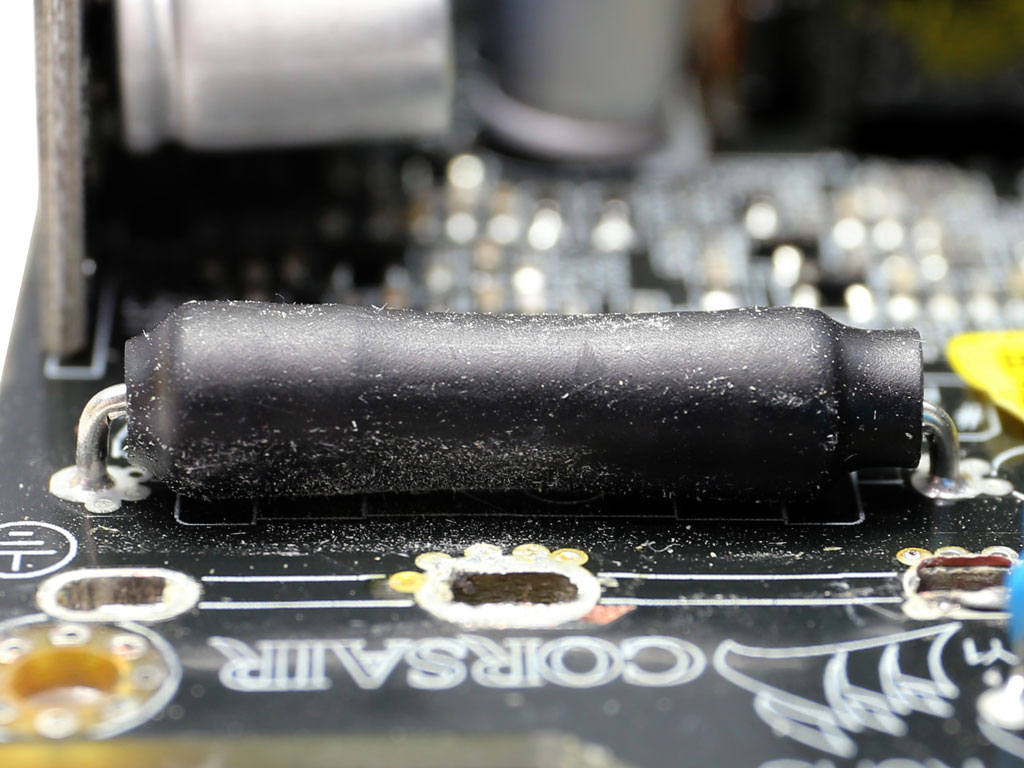
As usual, the first part of the transient filter is located on a small PCB. It consists of two Y capacitors, one X cap, and a choke. The same filter continues on the main PCB with the same number of X and Y caps, two CM chokes, and an MOV.
This is a small and inexpensive Metal Oxide Varistor (MOV). It can save the PSU and everything behind it from deadly power surges.
A single bridge rectifier is all we find. In most high-end PSUs there are at least two for lower energy losses. However, Great Wall probably wanted to use as few components as possible for maximum clearance between parts on its PCB.
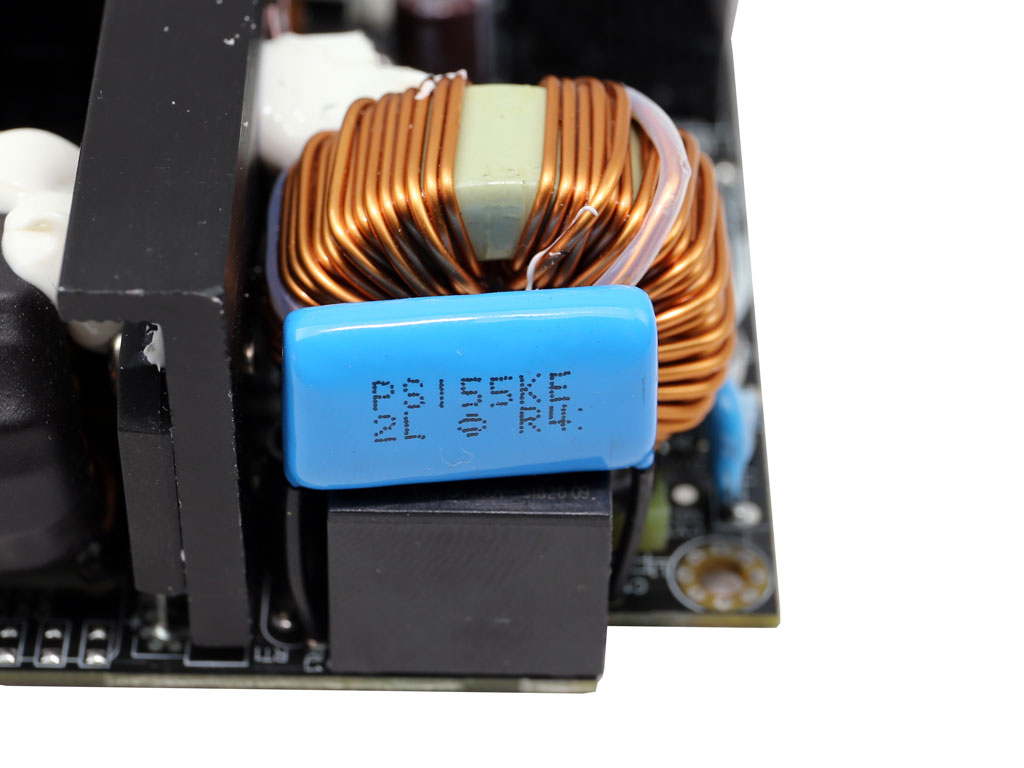


We find a single Infineon IPZ60R099C7 FET and IDH06G65C6 boost diode in the APFC converter. The bulk capacitor is provided by Nippon Chemi-Con and its capacity is ample for a >17ms hold-up time.
Get Tom's Hardware's best news and in-depth reviews, straight to your inbox.

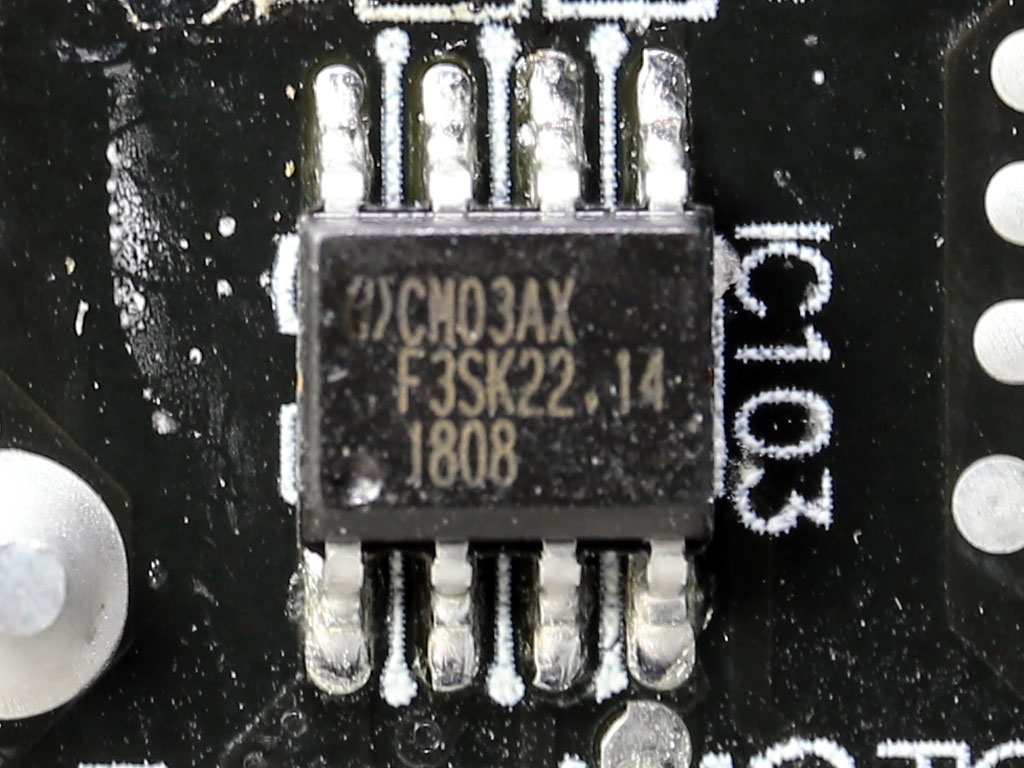
The APFC controller is a Champion CM6502 IC. It is supported by a CM03AX Green PFC controller.


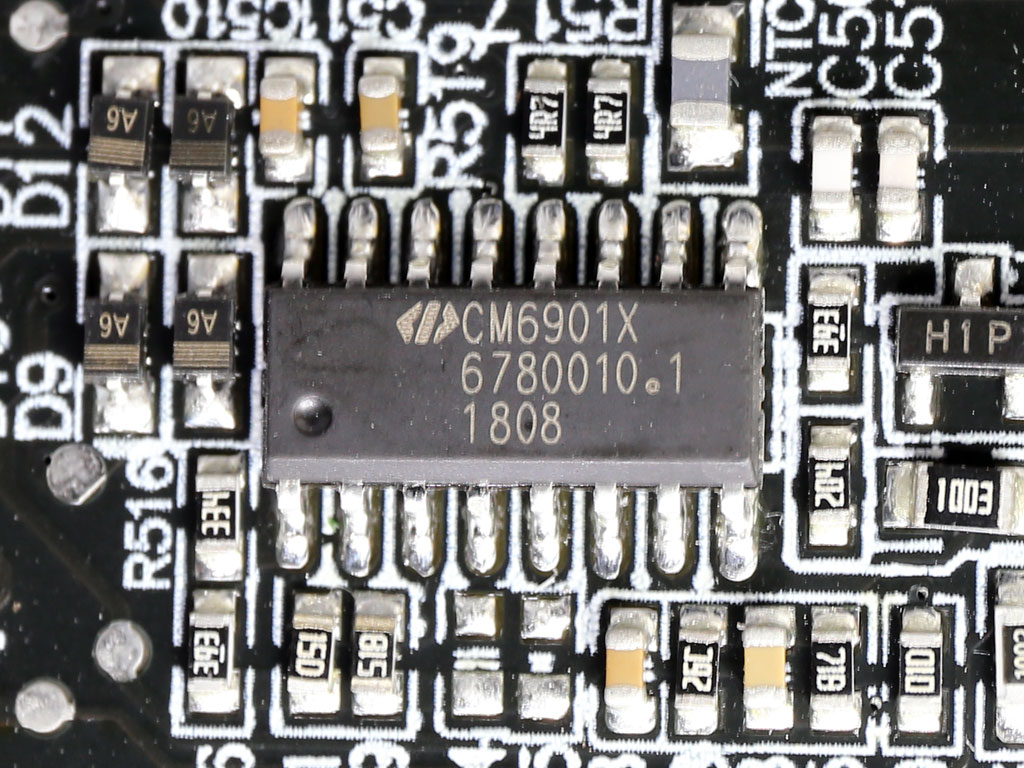
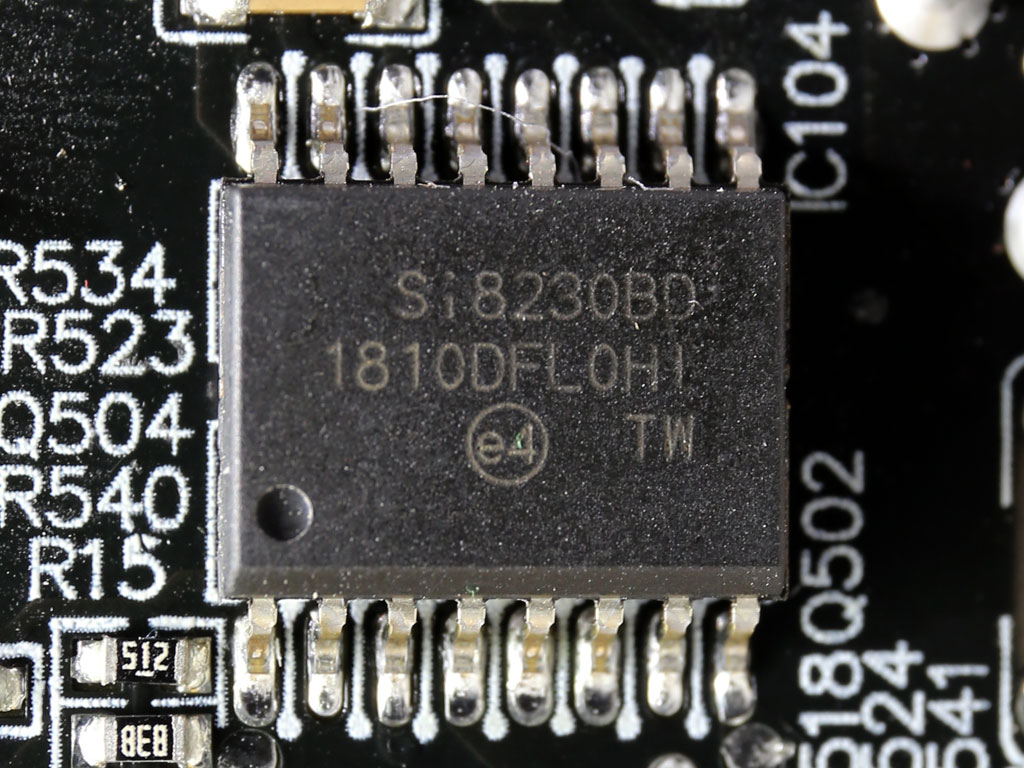
Two 60F2094s, arranged into a half-bridge topology, are used as the main switching FETs. A Champion CM6901X IC, installed on the main PCB's solder side, serves as the resonant controller. In the same area we find the supervisor IC, a IN1S429I-SCG, for which there is no information available online. Lastly, the driver IC for the main FETs is a Silicon Labs Si8230BD.
This is the power supply's main transformer. We damaged its sticker with a heat gun during the course of our protection feature testing.
The +12V rail is generated through four Alpha & Omega AON6590 FETs. Strangely enough, the SF600 Gold uses six of those FETs.


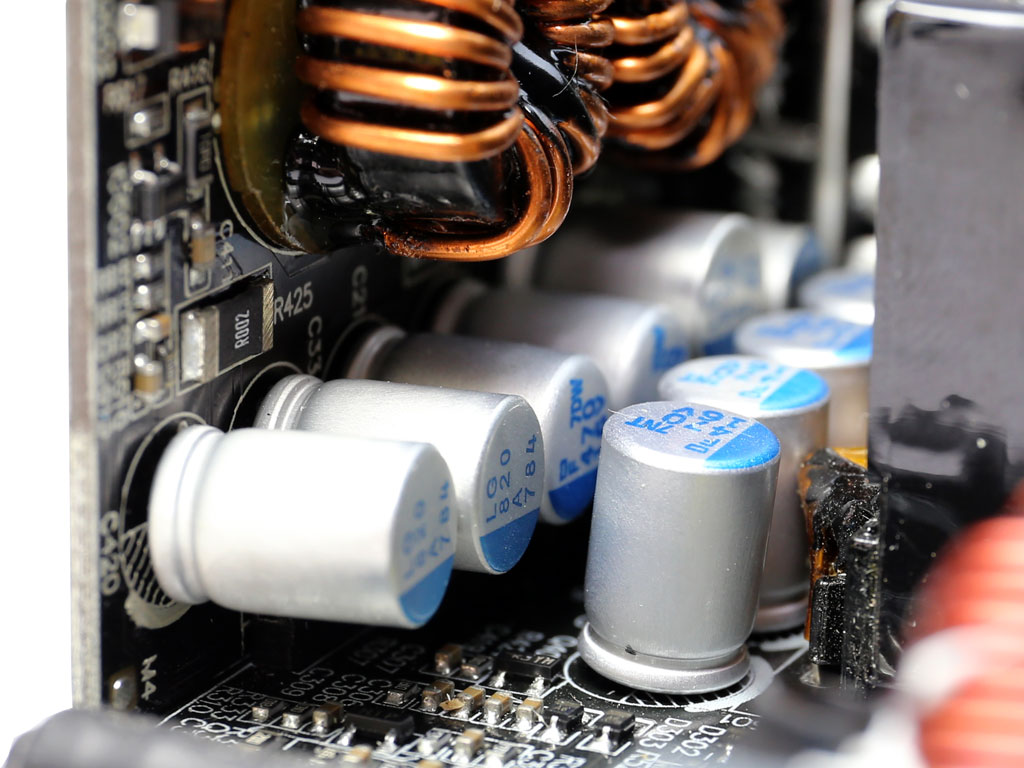

Filtering caps on the secondary side, which include a mix of polymer and electrolytics, are mostly provided by Chemi-Con. A single Rubycon capacitor is used by the 5VSB rail.


A PIC16F1824 MCU controls the fan speed profile. It's installed on the same board that hosts the VRMs responsible for generating the minor rails.
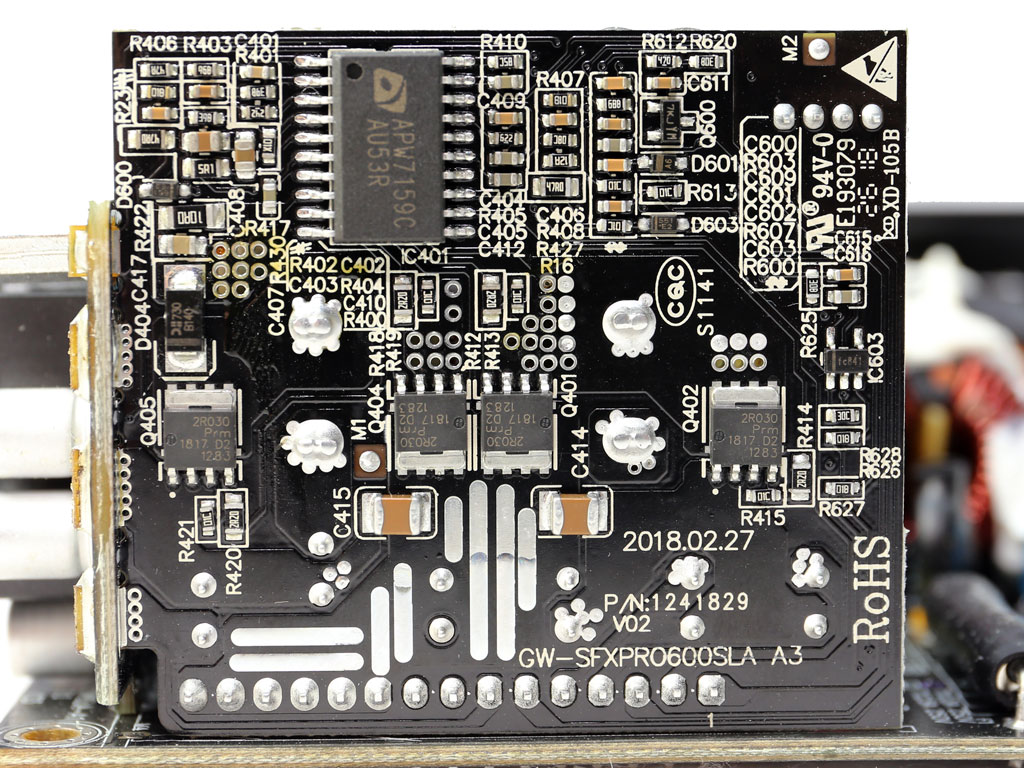

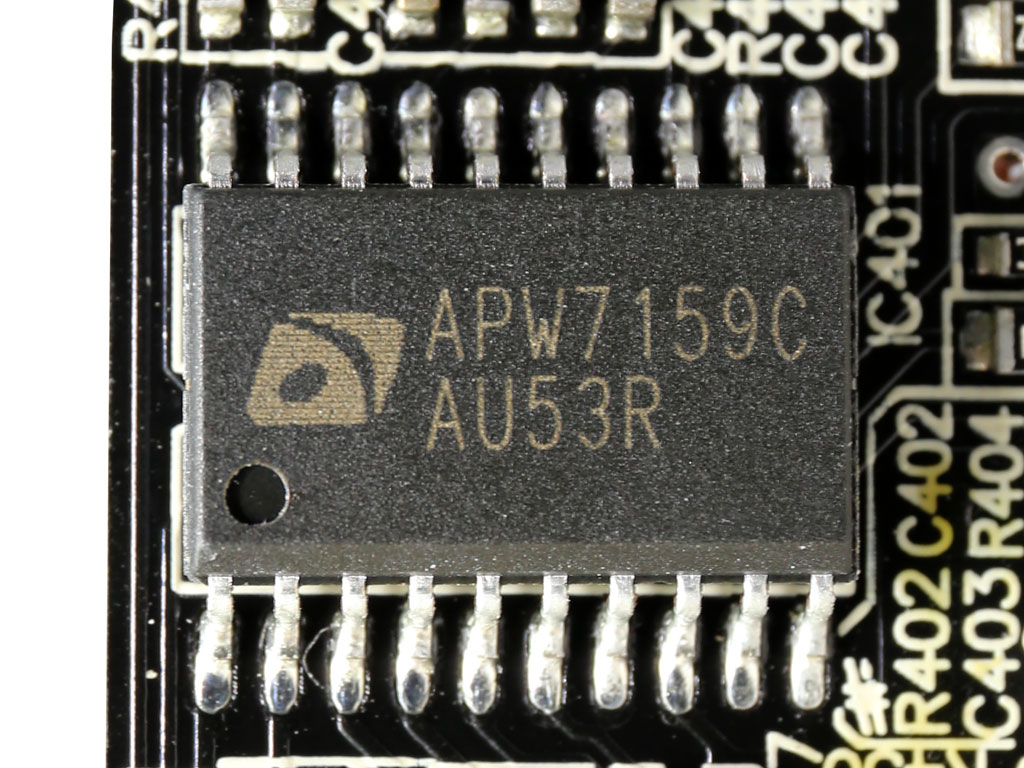
The DC-DC converters handling the minor rails employ four Nexperia PSMN2R0-30YL FETs. The common PWM controller is a Anpec APW7159C.



There are quite a few polymer caps on the front side of the modular board.
An Infineon ICE5QR1680AG quasi-resonant controller is responsible for the 5VSB rail.




Great Wall has solid production lines and Corsair is a demanding customer, so it comes as no surprise that this unit's soldering quality is top-notch.


The rifle bearing-based NR092L fan is the same one used in all of Corsair's SF (Gold and Platinum) models. A semi-passive mode should help extend its useful life, though we would have appreciated the ability to deactivate it. This would come handy in cases where the PSU has to be installed with the fan grille facing sideways or downward.
MORE: Best Power Supplies
MORE: How We Test Power Supplies
MORE: All Power Supply Content
Current page: Teardown and Component Analysis
Prev Page Unboxing Video Next Page Load Regulation, Hold-Up Time & Inrush Current
Aris Mpitziopoulos is a contributing editor at Tom's Hardware, covering PSUs.
-
Co BIY Less than 1% efficiency difference between Gold and Platinum ? Hard to make that pay under any normal use scenario.Reply
Glad to see that they made several other improvements for the Platinum model. -
iankphone I just completed my ncase-m1 build with this. It's really good.Reply
8700K, 2080Ti. Like a boss. I'm not overclocking however (insufficient cooling for that). -
Dark Lord of Tech Reply21685936 said:Just wait now for the SF750 to get reviewed :)
Looking forward to it. I will most likely get one for my next setup. -
smitty2k1 Did you test the SF600 platinum with Vega graphics cards? I'm getting the OCP to trip on my just running the Vega 56 in turbo mode. The same thing was happening with my older Silverstone SX-650G power supply, and Silverstone confirmed that they had made an engineering change to fix the OCP tripping.Reply
It only happens in Destiny 2, no other games. I'm curious if this is a widespread issue, or something else with my system. It seems the Vega cards are tough on PSUs.




